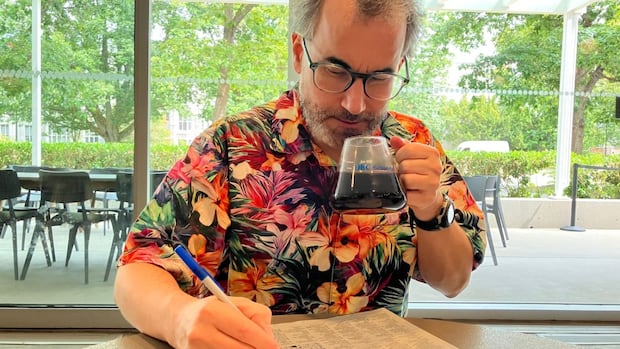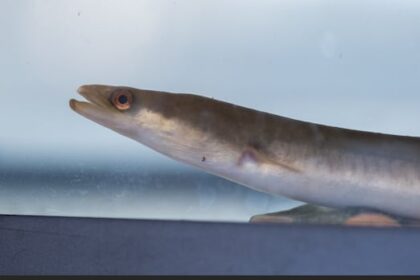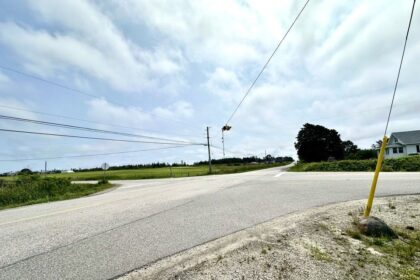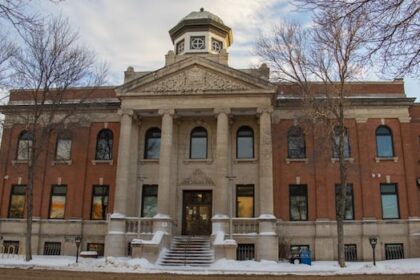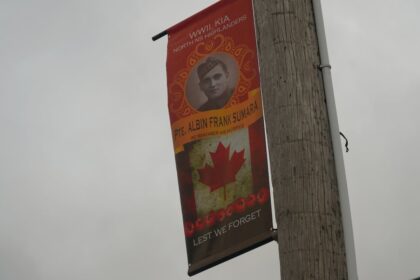British Columbia·Q&AChemistry professor by day, crossword puzzle creator by night, Mark MacLachlan shares his tricks of the trade.Chemistry professor by day, crossword puzzle creator by night, Mark MacLachlan shares his tricks of the tradeCourtney Dickson · CBC News · Posted: Sep 01, 2025 8:00 AM EDT | Last Updated: 2 hours agoMark MacLachlan is known for his expertise in chemistry, but he’s also a published puzzle creator. (Paul Joseph/Submitted by Mark MacLachlan)Across: 1. Crossword puzzle writer. C R U C I V E R B A L I S T The answer, of course, is cruciverbalist. That’s what UBC Dean of Science and chemistry professor Mark MacLachlan does in his spare time. He started doing crosswords when he was pursuing his post-doctorate degree at MIT in the late 90s. But one day, he started wondering who actually made the puzzles. “I started looking into it and realized [newspapers] accept submissions from the general public. There are professional crossword puzzle creators, but they’ll accept them from everyone,” MacLachlan said. “So I started dabbling with creating puzzles in 2006, 2007, and it took me a long time before I was able to get one to the level that was accepted. And my first one was accepted in the L.A. Times in 2016.”Now, he’s become something of a regular in the crossword game; over the past decade, the chemistry professor has had his puzzles featured in the Wall Street Journal, Los Angeles Times and the New York Times. MacLachlan told CBC’s The Early Edition all about his side gig.LISTEN | Mark MacLachlan on being a cruciverbalist:The Early EditionUBC Dean of Science moonlights making crossword puzzlesGloria Macarenko talks to UBC Dean of Science Mark MacLachlan about his love for crossword puzzle-making and what it’s like seeing his creations publised in publications like the New York Times, Los Angeles Times and Wall Street Journal.This interview has been edited for length and clarity. Mark, how long have you been creating crossword puzzles?Nearly 20 years. It took me about 10 years to get my first puzzle published, which was in 2016.What was that like, to see your work in the paper? It was amazing. I was so elated to finally get a puzzle accepted.How did you even go about it? How many trials and errors did you go through to get it just right?I had probably submitted about 20 different puzzles by that point, and everyone got rejected. Either the theme wasn’t consistent enough, or the theme didn’t tickle their fancy quite the right way, or it was too familiar. And then the one that I got accepted was one where I added the letter C, and it changed the spelling. For example, Reign of Terror became Crane of Terror, and I was able to consistently do that throughout the puzzle. The editor at the L.A. Times liked the puzzle and published it with the title ‘C Battery.’How do you pick the clues and the themes for your puzzles?It’s really difficult to come up with a theme that nobody has used in the past. So if you’re trying to think of a theme, I’m constantly looking around and thinking about words and thinking about how I could change those words and interesting phrases that could be reconfigured to have a different meaning than they do in everyday life.How long does it take to put together a puzzle?Starting the theme to completing the puzzle can take me anywhere from about 20 to 80 hours.And how much does it pay to have your crossword puzzle published in a major publication?A daily puzzle will pay about $50 to $300. A weekend puzzle, Sunday puzzle, which is the big 21 by 21 grid, will get you upward of $2,000 to $3,000.Have you broken it down to how much per hour, if you’re talking 80 hours that go into it?It’s not a good use of my time, I’ll be honest.So why do you keep doing it?I love it. I love the creative aspect, trying to come up with creative new themes that nobody’s used before. It works my mind. It’s something to do in my spare time.So if you come up with a crossword puzzle, you shop it out to, let’s say, the New York Times. If the New York Times says not interested, do you take it to the Wall Street Journal? Do you take it to the L.A. Times? Yeah, you can. I have done that in the past. I’ll take the feedback from the newspaper. They’ll say they didn’t accept it and here were the problems, and then I will spend hours and hours revising it, and then I’ll try another venue.Tell me about some of your themes.I think my favourite puzzle that I did was the first one I got published in the New York Times in 2016, and that one was called Aluminum Siding. There was a revealer in the middle of the puzzle, the word aluminum and siding. And the trick for the puzzle was that you had to imagine that there was an AL down the left side outside of the grid and an AL outside of the grid on the right side as well. So every word on the left side started with AL, but that was hidden. And every word on the right side ended with AL, but that was hidden. UBC Dean of Science Mark MacLachlan spends up to 80 hours designing each puzzle. (Submitted by Mark MacLachlan)I was unbelievably excited to get this puzzle accepted, and the neatest thing was getting a personal email from Will Shortz, as he said he liked the theme and there were some problems. So I actually had to revise that one maybe five times back and forth with him before he finally accepted the puzzle.I incorporate a lot of science words into my puzzles. So I’ve used the word nanotube, for example, in one of my puzzles. I’ve gotten a lot of the different elements into my puzzles. I had a puzzle where I incorporated all of the noble gases into the puzzle, and they were positioned where their atomic number is. Would you have any advice for people who do your crossword puzzles? Not really, just keep doing crossword puzzles, it’s a great way to keep your brain active. I sit down for about three hours every weekend and do a set of crossword puzzles just to make sure that my mind’s still working.Are you concerned at all about the advent of AI potentially affecting a job or a hobby like yours?Not really. I think that there’s still the creative element that comes up with the themes that will never be replaced by AI. I think AI can absolutely be used to fill the grid and create the clues for the puzzle. It could probably make it a lot easier, but I think there’s still room for humans to develop the themes.ABOUT THE AUTHORCourtney Dickson is an award-winning journalist based in Vancouver, B.C.With files from The Early Edition
This chemistry professor has a side hustle as a crossword creator for the New York Times
